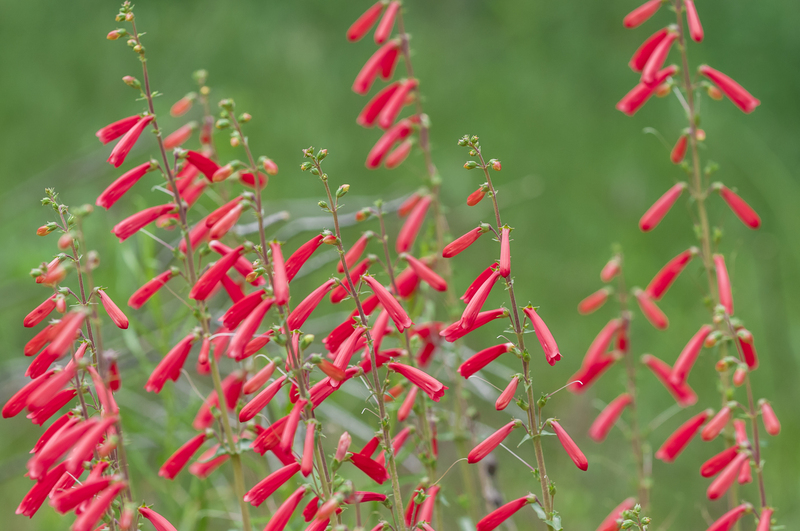Craft Eye-Catching Designs with Expert Hedge Trimming Tips
Posted on 26/06/2025
Craft Eye-Catching Designs with Expert Hedge Trimming Tips
Looking for ways to enhance your garden's aesthetic appeal? Whether you have a sprawling estate or a charming backyard, crafting attention-grabbing hedge designs can transform your outdoor space into a work of art. With professional hedge trimming techniques, you can unlock a world of creative possibilities for your landscape while improving plant health and structure. In this comprehensive guide, discover how to craft eye-catching designs with expert hedge trimming tips, ideal for beginners and seasoned gardeners alike.
Why Hedge Trimming Matters for Beautiful Landscapes
Hedge trimming serves both functional and decorative purposes. Well-kept hedges not only create defined borders, privacy, and windbreaks, but they also invite creativity through artistic shapes and topiaries. Attention to trimming not only keeps your garden neat and visually appealing but also fosters vigorous, healthy growth.
- Defines Spaces: Trimming emphasizes paths, garden beds, and property boundaries.
- Improves Plant Health: Regular pruning encourages strong, disease-resistant growth.
- Elevates Curb Appeal: Carefully crafted hedges leave lasting first impressions.
- Promotes Creativity: Artistic shapes turn ordinary gardens into stunning showcases.

Understanding Hedge Types and Growth Patterns
To achieve eye-catching hedge designs, it is vital to recognize the unique requirements of various hedge plants. Choosing the right species and understanding their growth habits allows you to select the best cutting techniques and artistic possibilities.
Popular Species for Hedge Design
- Boxwood (Buxus): Classic, dense, and ideal for formal shapes and topiary.
- Yew (Taxus): Slow-growing, tolerant of severe trimming, excellent for intricate creations.
- Privet (Ligustrum): Fast-growing, used for quick results and informal hedges.
- Laurel (Prunus laurocerasus): Broadleaf, lush appearance, responds well to shaping.
- Holly (Ilex): Adds winter interest with evergreen leaves and berries, also suitable for creative trimming.
Growth Habits to Consider
- Evergreen vs. Deciduous: Evergreens provide year-round structure; deciduous species lose leaves seasonally but may allow for creative winter designs.
- Vigorous Shoots: Some species, like privet, have rapid growth requiring frequent maintenance, while boxwood maintains shape longer after trimming.
- Leaf Size & Texture: Smaller leaves and tight branching make for cleaner lines and intricate shapes; large leaves are best for softer, sweeping forms.
Essential Tools for Creating Artistic Hedge Designs
Before embarking on your journey towards crafting eye-catching hedge designs, investing in quality tools is absolutely essential. The right equipment not only makes trimming easier but ensures clean cuts that encourage lush growth and sharp lines for your creative designs.
Must-Have Hedge Trimming Tools
- Hedge Shears: For precise, manual cutting and finishing touches.
- Electric or Gas Hedge Trimmers: Efficient for larger hedges and initial shaping.
- Pruning Loppers: To tackle thicker branches and rejuvenation pruning.
- Pruning Saws: For mature, woody growth.
- Taut String & Stakes: Ensure straight trims and symmetrical patterns.
- Topiary Frames & Templates: Essential for complex shapes and unique designs.
- Personal Protective Equipment: Safety goggles, gloves, and ear protection.
Timing is Everything: When to Trim for Best Results
Knowing when to trim your hedges is key to maintaining robust growth and vibrant designs. The ideal timing depends on species and your goals--restorative pruning, annual shaping, or creative sculpting.
General Trimming Guidelines
- Deciduous Hedges: Late winter or early spring before new growth begins is optimal.
- Evergreen Hedges: Late spring to mid-summer, after the coldest frosts have passed.
- Flowering Hedges: Immediately after flowering to avoid removing buds for next season.
- Twice-Yearly Maintenance: Fast-growing species often benefit from light trims in early summer and again at the end of the growing season.
Tip: Avoid heavy trimming in late summer or autumn, as it may promote tender growth susceptible to winter frost damage.
Expert Hedge Trimming Techniques for Show-Stopping Designs
Achieving eye-catching designs hinges on mastering a blend of foundational techniques and innovative artistry. Here are the best expert tips to unlock your garden's design potential:
1. Establishing the Perfect Shape
- Start with a straight line: Stake out your desired outline with string for reliable symmetry.
- Taper your edges: Always trim hedges slightly narrower at the top, ensuring sunlight reaches the entire plant and reduces bare lower branches.
- Angle your cuts: Use shears at a slight upward slope; this method creates beautiful, balanced silhouettes, particularly for formal styles.
2. Creative Topiary and Shaped Designs
If you're eager to craft unique statements in your landscape, consider experimenting with topiary designs:
- Start Simple: Boxes, spheres, and cones are ideal for beginners and provide timeless elegance.
- Advance to Intricate Forms: Once confident, try spirals, animal figures, or abstract patterns using wire frames as guides.
- Maintain Regularity: Detailed shapes require more frequent, light trimming to keep crisp lines and preserve the design.
3. Techniques for Mixed, Layered, and Informal Hedges
- Layer with Complementary Species: Blend evergreens with flowering or colored foliage plants for multi-season interest.
- Vary Heights and Textures: Create flowing lines and naturalistic waves by trimming at different levels and staggering cut depths.
- Encourage Natural Forms: For informal hedges, prune lightly to remove straggly growth while maintaining a soft, organic outline.
4. Pruning for Health and Longevity
- Remove Dead or Diseased Wood: Regularly snip out unhealthy stems to prevent disease.
- Thin Out Dense Centers: Improving airflow reduces fungal problems and encourages inner growth.
- Avoid Over-Pruning: Don't cut back into bare wood, especially with slow-growing species that struggle to regenerate.
Vision and Planning: Design Tips for Attention-Grabbing Hedges
No matter the size of your space, strategic design and planning ensure your efforts result in a truly eye-catching landscape. Consider these principles when envisioning and mapping out your hedge display:
Key Elements of Eye-Catching Hedge Design
- Proportion and Scale: Select hedge heights and forms proportional to your house, pathways, and garden dimensions.
- Repetition for Rhythm: Repeating shapes or patterns creates flow and harmony.
- Contrast and Color: Use alternating leaf textures, colors, or flowering hedges for dynamic visual impact.
- Focal Points: Place shaped designs at garden entrances, intersections, or as backdrops for striking effect.
- Seasonal Interest: Consider evergreen structure for winter, flowering species for spring and summer color, and berries for autumn appeal.
Planning Steps for a Successful Hedge Project
- Sketch your desired layout--mark focal points, lines, and curves.
- Choose suitable species based on light, soil, climate, and your preferred maintenance level.
- Prepare the planting site--ensure well-drained soil and enough space for mature growth.
- Install guide strings and frames for precise, proportional planting.
- Trim regularly from planting onward to build dense, even structure and stimulate healthy growth.
Maintaining Your Masterpiece: Aftercare and Troubleshooting
Consistent aftercare is the secret to long-term garden appeal. With proper maintenance practices, your meticulous hedge designs will flourish and remain the talk of the neighborhood.
Aftercare Essentials
- Water Newly-Planted Hedges: Ensure soil remains moist but not waterlogged, especially during dry spells.
- Mulch: A layer of organic mulch keeps roots cool, retains moisture, and suppresses weeds.
- Feed Appropriately: Annually apply balanced fertilizer in spring to promote lush growth.
- Monitor for Pests and Diseases: Watch for leaf spot, box blight, aphids, or caterpillars and treat promptly.
- Sharpen Tools Regularly: Clean, sharp blades make cleaner cuts, minimizing plant stress and ensuring crisp lines.
Troubleshooting Common Hedge Problems
- Hedge browning or thinning: Check for drought stress, poor drainage, or disease. Increase water and soil aeration if needed.
- Uneven growth or gaps: Stimulate regrowth with light pruning, feeding, and improved watering.
- Poor response to pruning: Avoid hard cuts into old wood and be patient--some species bounce back more slowly.
Environmental and Eco-Friendly Hedge Trimming Tips
Responsible hedge care not only preserves your landscape's beauty but benefits local ecosystems. Follow these sustainable hedge trimming practices:
- Avoid Nesting Seasons: Many birds nest in hedges. Trim outside of peak breeding months to protect wildlife.
- Compost Trimmings: Recycle healthy clippings for nutrient-rich garden mulch or compost.
- Promote Biodiversity: Blend flowering and berrying species to attract pollinators and birds.
- Limit Chemical Use: Choose manual pest control and natural remedies when possible to safeguard beneficial insects.

Frequently Asked Questions: Crafting Eye-Catching Hedge Designs
Q1: How often should hedges be trimmed to maintain intricate designs?
A: For precise, sculpted shapes, light trimming every 4-6 weeks during the growing season maintains definition. Informal hedges may only need 1-2 trims per year.
Q2: Can I create unique shapes with fast-growing species?
A: Yes! Fast-growing hedges like privet are perfect for bold, trendy forms, though they require more maintenance to uphold sharp lines.
Q3: What's the best way to revive an overgrown or neglected hedge?
A: Gradually cut back over two seasons, removing up to one-third each year. Feed, mulch, and water to encourage regrowth and fill gaps over time.
Q4: Are there benefits to hiring a professional hedge trimmer for complex designs?
A: Absolutely! Professionals bring advanced skills, artistic vision, and specialized equipment for transforming hedges into living sculptures.
Conclusion: Grow Creativity with Expert Hedge Trimming
Transforming your landscape doesn't require endless resources--just creativity, a vision, and expert hedge trimming tips. With dedication, the right tools, and thoughtful techniques, anyone can craft eye-catching hedge designs that stand out across the seasons. Embrace these expert tips for lasting beauty, and enjoy the process of shaping your personal garden masterpiece!
Start your journey today and watch as your inspiring hedge creations add charm, privacy, and value to your home's outdoor spaces.

